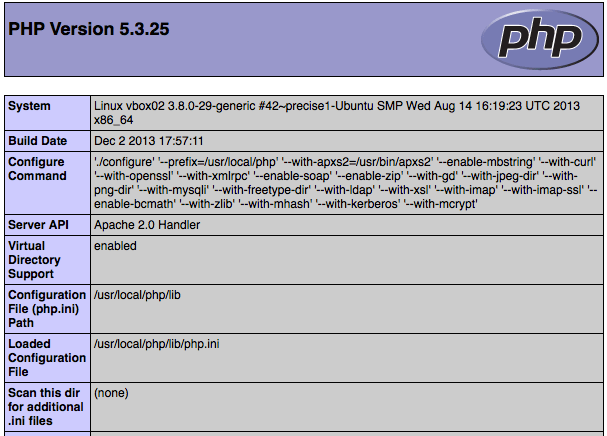Creating a phpinfo File
Overview
The phpinfo() function is a diagnostic tool that can help output information about your PHP configuration on the server running Sugar®, including the PHP version. Creating a phpinfo.php file will provide information regarding your PHP installation's configuration settings, paths, and libraries. Please keep in mind that the file should be created in the directory of the site or application you are troubleshooting to ensure that the information provided pertains to that specific environment. For more information regarding phpinfo(), please refer to the phpinfo documentation available on php.net. This article will cover how to create a phpinfo.php file to help troubleshoot issues in your Sugar instance.
Steps to Complete
Creating the phpinfo.php File
The first step is to use your preferred text editor (e.g. Notepad++) to create a new file. Please note that the phpinfo.php file must be created as a plain text file.
<?php phpinfo(); ?>
Placing the File in the Sugar File System
The phpinfo.php file should then be uploaded to your server in order to view the necessary information in your browser. First, locate the directory containing your Sugar file system and check to see if there is an existing phpinfo.php file. If it does not exist, please upload or copy the file created in the previous step into this directory. Please ensure that the file has the correct permissions by referring to the Required File System Permissions on Linux and Required File System Permissions on Windows With IIS articles.
Opening the phpinfo Page in a Browser
You will now navigate to the phpinfo page in your browser to view all the PHP information for the specific directory you are checking.
Below are some helpful tips in determining the appropriate URL to use:
- If the site URL involves a location after the domain (e.g. http://www.site.com/*mycrm*/), the URL should be entered as "http://www.site.com/mycrm/phpinfo.php".
- If the site URL is just a domain (e.g. http://mycrm.site.com/), the URL should be entered as "http://mycrm.site.com/phpinfo.php".
Reviewing the phpinfo Page
Once the PHP page is loaded in the browser, you can find the necessary information to help troubleshoot your issue accordingly.
If the phpinfo page loads successfully, all of the PHP information for the specific directory in your server will be provided. Go through the following checklist as guidance when reviewing these results:
- Ensure that the
php.inifile is in the expected location. - Ensure that the memory limit is high enough. Sugar recommends a PHP memory limit of at least 1GB. This value may need to be increased depending on how your users utilize Sugar. For example, operations such as mass update and imports may require additional memory depending on your instance size and configuration.
- Ensure that your PHP version is supported for your Sugar version by confirming with Sugar's supported platforms.
- Ensure that all of the libraries required by Sugar are present and/or active in the list.

Troubleshooting Potential Errors
If the phpinfo page fails to load, the following errors may appear in your browser:
- 404 Error : Indicates that the URL is incorrect or the file was not placed on the server in the specified location.
- 500 Error : Indicates that the server is unable to serve the PHP file. This could be due to file permissions or a problem with the PHP setup.